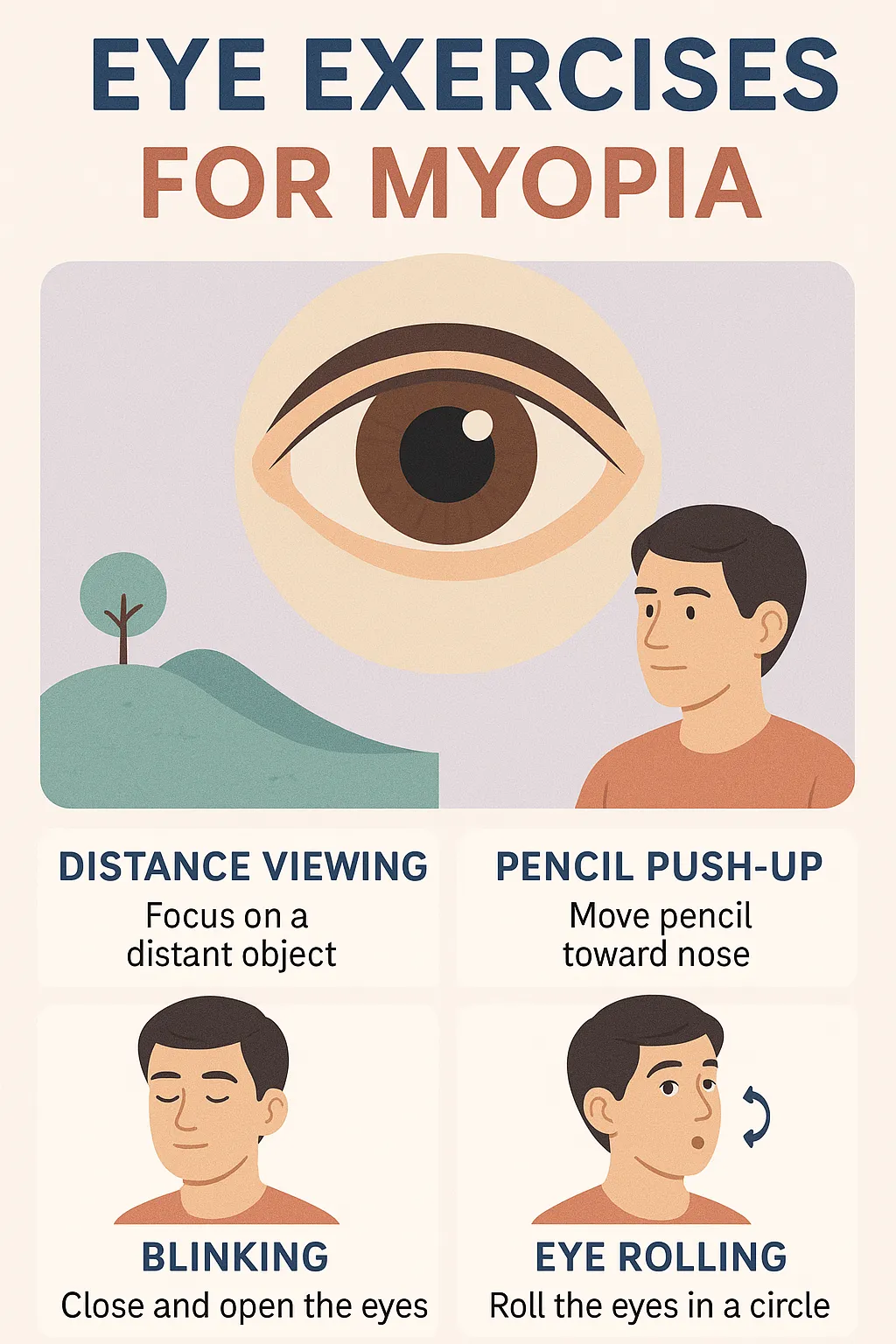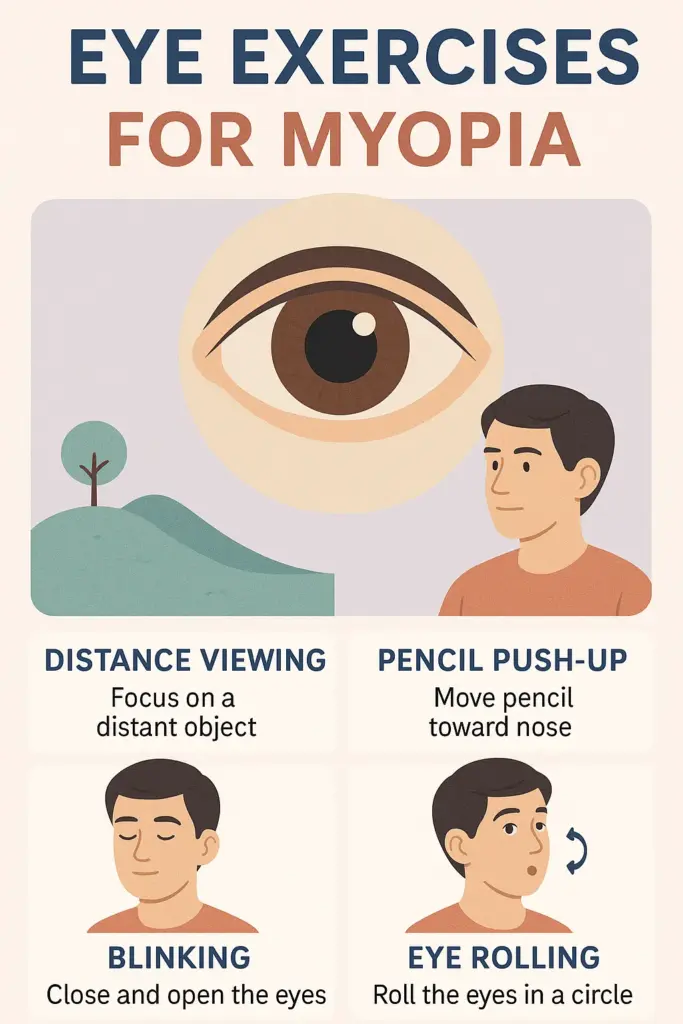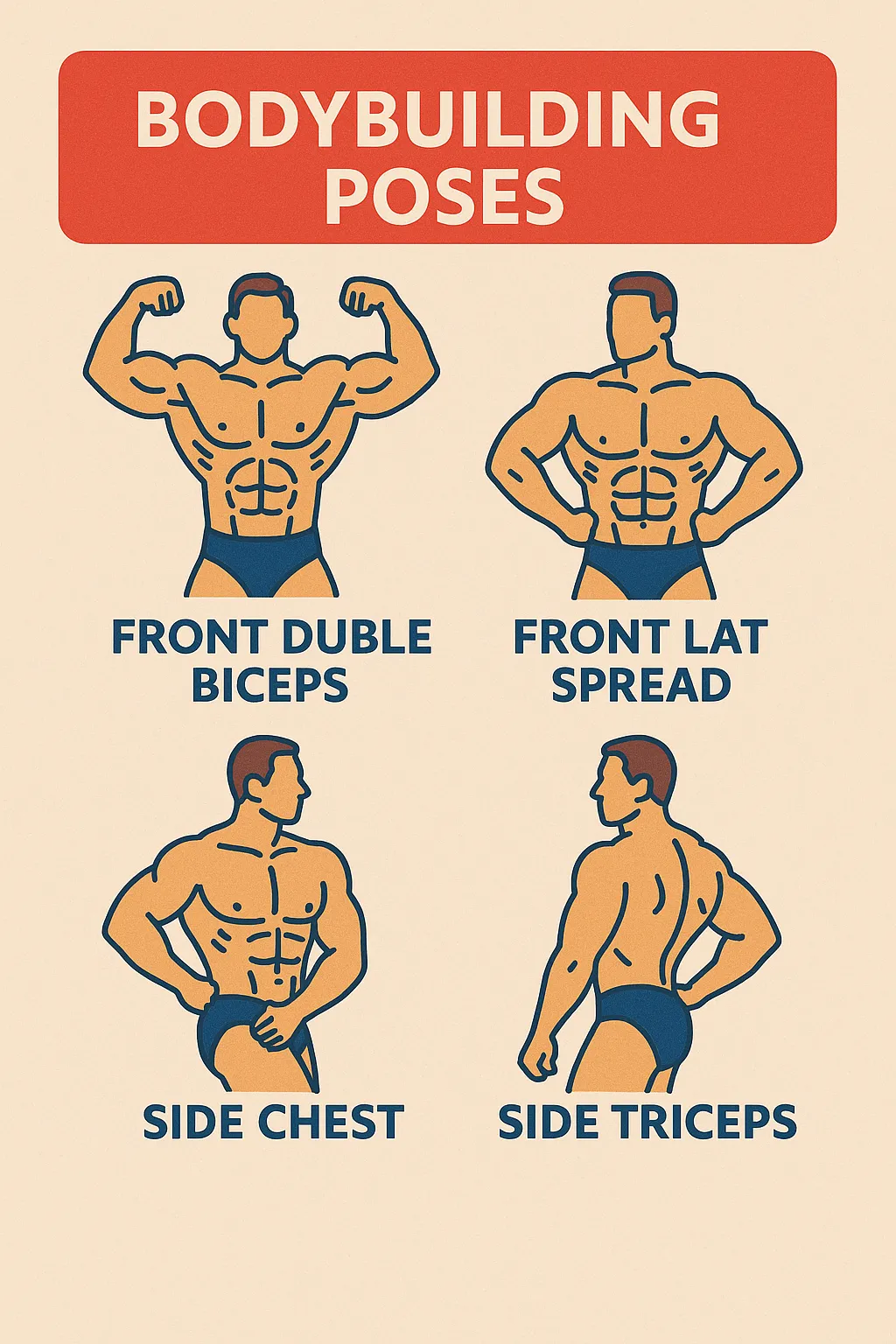Myopia (short-sightedness) has been a growing concern in a world dominated by digital displays in our everyday life. From the young to the old, millions of people experience the stress and inconvenience of blurry distance vision across the world.

Though glasses, contact lenses, and corrective surgeries are still the solutions most often sought, interest is growing in exploring natural methods for managing—and even potentially improving—myopia. Eye exercises are one of these natural alternatives that are gaining popularity.
This blog post covers eye exercises as a natural method to help myopia and highlights their efficacy, the complementary advantages in eyesight improvement through natural techniques, and eye workouts that can be part of a daily routine. Whether you’re interested in reducing eye strain, halting the progression of your myopia, or you want to explore holistic options for eye health, this blog covers it all!
What is Myopia?
Myopia is a widely spread type of refractive error which causes the distance vision to be blurry but the near vision to be sharp. It happens when the eyeball is elongated or the cornea is rounded, so that light rays converge in front of the retina instead of directly on it.
Causes and Risk Factors
• Genetics: Myopia tends to be hereditary.
• Too Much Near Work: Long hours of reading or screen time or near tasks. Managing Eyestrain: A Complete Guide
• Lack of time outdoors: There is growing evidence that limited sunlight exposure due to a lack of time outdoors is driving myopia progression.
• Visual Stress & Fatigue: Over the years, you develop poor visual habits such as overlooking screens without breaks, glare from poor lighting, and working with incorrect posture.
Symptoms of Myopia
• Blurred distance vision
• Eye strain or fatigue
• Headaches
• Being unable to focus on distant objects
• Difficulty driving at night
Do Eye Exercises Help With Myopia?
So eye exercises aren’t going to “cure” myopia, nor literally reshape the eye, but they can be an adjunct to decreasing strain, increasing the flexibility of focus and slowing progression, especially when coupled with some lifestyle changes.
Researchers and eye therapists say eye muscles can be exercised and visual habits can be improved to train the eyes to work more efficiently, especially for a young person or one with mild myopia.
Benefits of Eye Exercises
• Improved focusing ability
• Reduced eye fatigue
• Better eye coordination
• Slower progression of myopia
• You have a very high level of awareness of visual habits
• An increase in the amount of tears produced and in eye hydration
Myopia: Effective Eye Exercises
Palming
Aim: To ease the physical strain on muscles around your eyes and relieve eye strain.
How to Do It:
• Rub your hands together to make some heat.
• Cup your palms gently over your closed eyes without pressing on them.
• Close your eyes, take a deep breath and relax for a few minutes.
When to Do It: Whenever you feel eye strain, especially after looking at a screen or reading.
20-20-20 Rule
Purpose: Reduces digital eye strain by ensuring the eyes get regular breaks.
How to Do It:
• Every 20 minutes, gaze into the distance at an object 20 feet away for at least 20 seconds.
Tip: Get a reminder or an app so you don’t fall behind.
Near and Far Focusing
Purpose: Enhance focus, flexibility and accommodation.
How to Do It:
• Hold your thumb 10 inches away from your face for 10 seconds, and focus on that.
• Then focus on an object 20 feet away for 10 seconds.
• Do it for 5 minutes.
Frequency: 2–3 times daily.
Eye Rolling
Purpose: Strengthens the muscles and mobility of the eyes.
How to Do It:
• Sit comfortably, looking straight ahead.
• Slowly roll your eyes to the right 10 times.
• Reverse and roll in a counterclockwise direction for 10 reps.
How often: Once or two times a day.
Figure Eight (Infinity Focus)
Purpose: Improves eye ball movement and focus.
How to Do It:
• Visualise a big figure eight about 10 feet in front of you.
• Smoothly trace the shape with your eyes for a minute or two.
• Reverse direction and repeat.
Blinking Exercises
Indication: Increases tear production and decreases dryness.
How to Do It:
• For 1 minute, blink slowly and intentionally every 4–5 seconds.
Tip: Do this while working on a screen to help keep your eyes moist.
Zooming
Purpose: Strengthens the eye’s focus muscles.
How to Do It:
• Stretch your arm with the thumb upwards and concentrate on your thumb.
• Gradually bring your thumb toward your nose, eyeing it closely.
• Then extend it again and repeat.
Duration: 5 minutes daily.
Brock String Exercise
Purpose: Enhance binocular vision & coordination.
How to Do It:
• String three beads at changing intervals.
• Tie one end to a fixed object, place the other end at your nose.
• Watch how the threads cross at each bead point.
Best For: Convergence problems and myopia due to poor coordination.
Eye Exercise for Kids with Myopia
Since myopia typically begins in childhood, early detection and intervention are critical. Eye exercises can be converted into fun activities:
• Use toys or colourful objects for near-far focus.
• Gamify moves (e.g., eye yoga to songs or prizes).
• Minimum of 2 hours/day outdoors with exercises.
Expert Insights: Do Eye Exercises Help?
Though anecdotal evidence backs up the benefits of eye exercises, scientific studies have produced mixed results:
• Some studies support vision therapy for improving focus, coordination, and reducing eye strain.
• Others show limited evidence that exercises can reverse myopia progression, especially in adults.
Bottom line: Eye exercises are safe, inexpensive, and good for general comfort, so they’re a worthwhile part of a broader eye care strategy.
Healthy Habits That Go Hand in Hand with Eye Care
• Practice Good Lighting: Never read or work in low light. Prefer natural light.
• Maintain Proper Posture: Screens should be at eye level and 20–24 inches from your face.
• Limit Screen Time: Especially important for kids—use parental controls and schedule breaks.
• Eat Eye-Friendly Foods: Foods rich in Vitamin A, C, E, and Omega-3s (carrots, leafy greens, fish).
• Go Outdoors: Sunlight and looking at distant objects lower the risk of childhood myopia.
When to See a Professional
Exercises may be beneficial, but they’re not a substitute for professional care. Consult an eye doctor if:
• You notice worsening vision
• Frequent headaches or dizziness
• Eye pain from exercises
• You’re planning to stop using glasses or change treatment
A licensed optometrist can tailor a plan suited to your needs.
Final Thoughts: An Integrated Approach to Vision
Eye exercises for myopia aren’t an instant solution, but they’re a natural, preventative measure to support eye health. When combined with healthy habits, proper nutrition, eye exams, and screen control, they help maintain visual comfort and can slow the progression of myopia.
Even a few minutes of eye workouts daily can relax your eyes and improve your focus, especially in our screen-dominated world. So, do your eyes a favour, and exercise them today. They deserve it.







